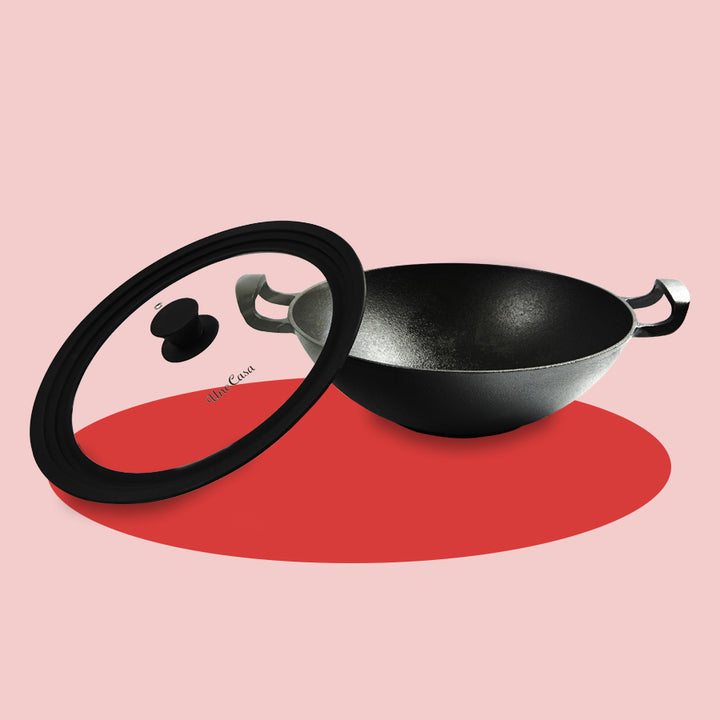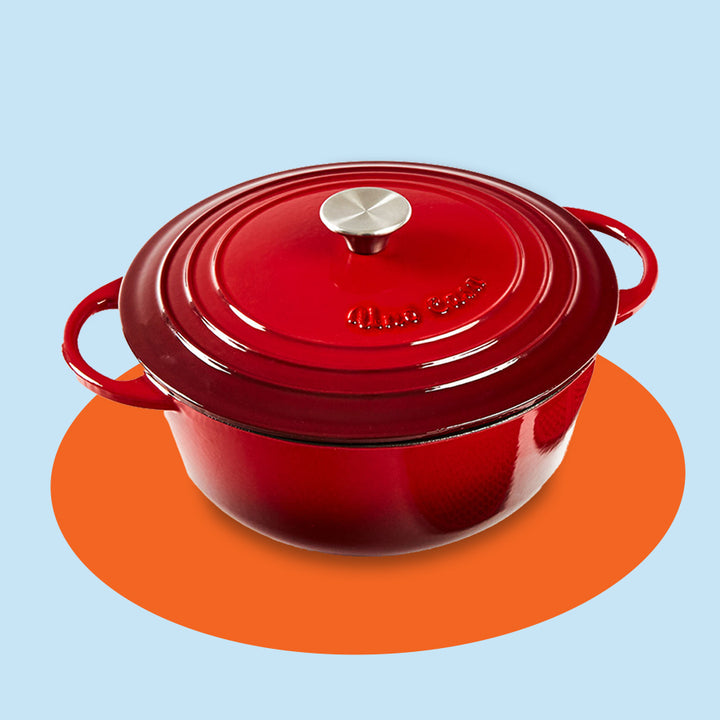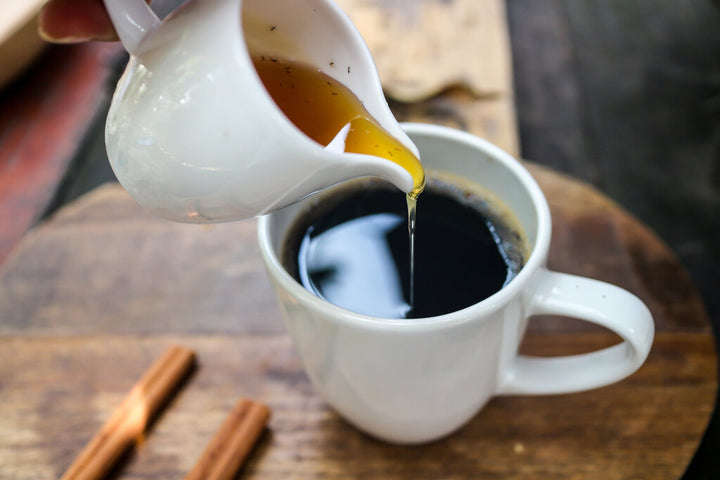How To Clean a Dutch Oven The Right Way!

We love cooking with a trusty Dutch oven. The deep sides and solid construction of this timeless piece of kitchenware make it the perfect cooking device for casseroles, roasts, and even some delicious desserts. You can cook on the stovetop, stick it in the oven, or throw it straight into the campfire!
But while cooking up a feast is undeniably fun and easy with a camping Dutch oven, it's the cleaning that often turns people off from making more use of this cookware. We've been there, and yes, the beginning can be a challenge. Knowing how to clean a Dutch oven, be it traditional cast iron or enameled cast iron, takes some know-how. There are so many rules! Can you scrub the pot? Can you use soap? Do I need to re-season the Dutch oven?
We decided to put together an easy how-to guide for cleaning a Dutch oven to help you out and to prove that it's not as difficult as you might think! Keep reading, to find out more!
How to clean Dutch ovens: cast iron vs. enamel
Dutch ovens are large cooking pots with a removable lid with a multitude of kitchen and camping applications. Every kitchen should have one because there are so many one-pot dishes you can cook inside them. Fans of the Dutch oven will likely already know, but there are two different types of Dutch ovens that you could be cooking with: cast iron or enamel.
Traditional Dutch ovens are made from heavy cast iron, the same way they have been for hundreds, if not thousands of years. They are heavy but almost impossible to break. They also need regular seasoning and TLC to stop them from rusting.
Modern Dutch ovens are made of lighter cast iron that has a convenient yet delicate enamel coating. This enamel coating acts forms a non-stick layer, which means the Dutch oven needs no seasoning and is super-easy to wipe down after each use. The downside is that an enameled cast-iron Dutch oven is much easier to break and is not suitable for outdoor cooking.
When it comes to cleaning and maintenance, both need to be taken care of in slightly different ways, so it's essential to get this right; but that's why we wrote this guide!
How to clean a cast-iron Dutch oven
Let's start with the heavy, dependable, yet seemingly tricky cast iron Dutch oven, the traditional kitchen cookware. Cast iron has somewhat of a reputation for being a challenge to clean, but it's really not as bad as you might think!
In fact, after a few scrubs and a bit of seasoning, you'll find it's super-easy to cook with and sustain. Keep in mind that a cast-iron Dutch oven is difficult to break, so don't worry about being gentle. You do, though, need to remember to season the Dutch oven regularly, or it won't be non-stick. Check out our guide on how to season a dutch oven properly.
To make things easier, we've broken down the cleaning and care process into 3 distinct stages:
- After cooking, immediately remove any burnt residue or stuck-on food left in the Dutch oven. Dump out any large chunks and remaining liquid and then use a paper towel to wipe down the Dutch oven inside and out.
- After wiping down your cast iron with the towel, take your pot over to the sink and run some hot water over it. You shouldn't need to soak it or even use soap; simply give it a gentle wash down with a cloth or sponge.
- Dry the Dutch oven. And we mean thoroughly. You need to catch as much moisture as possible, or else it can quickly attract rusting on the inside, which isn't so pleasant for cooking. You could even gently heat the Dutch oven on the stovetop to burn off any excess liquids.
It's as simple as that.
If you have stubborn stains or have spotted a bit of rust, you might want to bring out the steel wool and give the Dutch oven a good scrub down. You can also use scrapers or spatulas on stubborn leftovers or stains. We don't recommend soaking the Dutch oven overnight as it becomes a haven for rust. You can, however, soak it in hot water while you scrub it.
The downside of this tactic is the fact that you'll start to scrub off the seasoning. Cast-iron cookware needs a layer of seasoning to stop food from sticking while it's cooking. This seasoning is made of a layer of polymers that form when oil is heated at the oven's base.
How to season a cast-iron Dutch oven
Never fear! Though any cast-iron product needs regular seasoning to keep up that protective layer, it's not too difficult a process to master!
You'll want to re-season your pan every time you give it a thorough clean, or if food begins to stick to the surface when you're cooking. Simply follow these steps to season your pot:
- After wiping down and cleaning your Dutch oven, use a paper towel to rub a thin layer of cooking oil over the inside.
- Preheat your oven up to 450 degrees Fahrenheit and then leave your Dutch oven to bake upside down for at least one hour.
- Remove the pot from the oven and allow it to cool down naturally before storing.
Remember to always store your cast-iron Dutch oven in a moisture-free cupboard to avoid attracting rust while it's not in use. This is particularly important if you won't be cooking with your Dutch oven for a while (but come on, with these, you'll want to use it all the time!).
How to clean an enameled cast-iron Dutch oven
An enameled cast-iron Dutch oven is a lot easier to take care of compared to a traditional cast-iron Dutch oven, purely because it's already coated in a non-stick protective layer. For that reason, you shouldn't need to season your pot, unless you chip the porcelain coating.
The non-stick enamel coating also makes it super easy to clean. When you finish cooking, you can wipe down the inside and outside with a damp cloth, and most of the hard work should be done for you. Rinse the oven under the tap, dry thoroughly, then store away until the next time it's needed.
If you have particularly stubborn stains or burnt food, you can follow these steps to help with cleaning the enamel Dutch oven:
- After cooking, wipe down the Dutch oven with a cloth or towel. Use a spatula or wooden spoon to remove any stubborn residue or food.
- Take your Dutch oven over to the sink and fill it to the top with warm water.
- Use a nylon brush to scrub off the residue.
- Rinse the Dutch oven again under warm water, then dry thoroughly.
If the stains persist, you can use a little baking soda to eliminate those pesky left-behinds. Fill your Dutch oven with water and add a couple of teaspoons of baking soda.
Place the Dutch oven on the stovetop and bring the mixture to a boil. Leave it to soak for a few hours (overnight, if it's particularly stubborn), then scrape off anything that's still left on the cooking surface with a nylon brush.
Rinse, dry, and store!
Now you know how to clean your Dutch oven, the correct way!
Cleaning cast-iron Dutch ovens needn't be a chore when you know the right way to do it! You'll quickly appreciate just how easy it can be to wipe off that pesky burnt residue with the right tools and know-how. It's even easier if you've got yourself a shiny enameled Dutch oven because everything will literally wipe straight off!
Make sure to bookmark our handy guide on cleaning a Dutch oven for the next time you're cooking up a casserole or a one-pot Sunday roast.
Leave a comment
Comments will be approved before showing up.
Also in Tips










